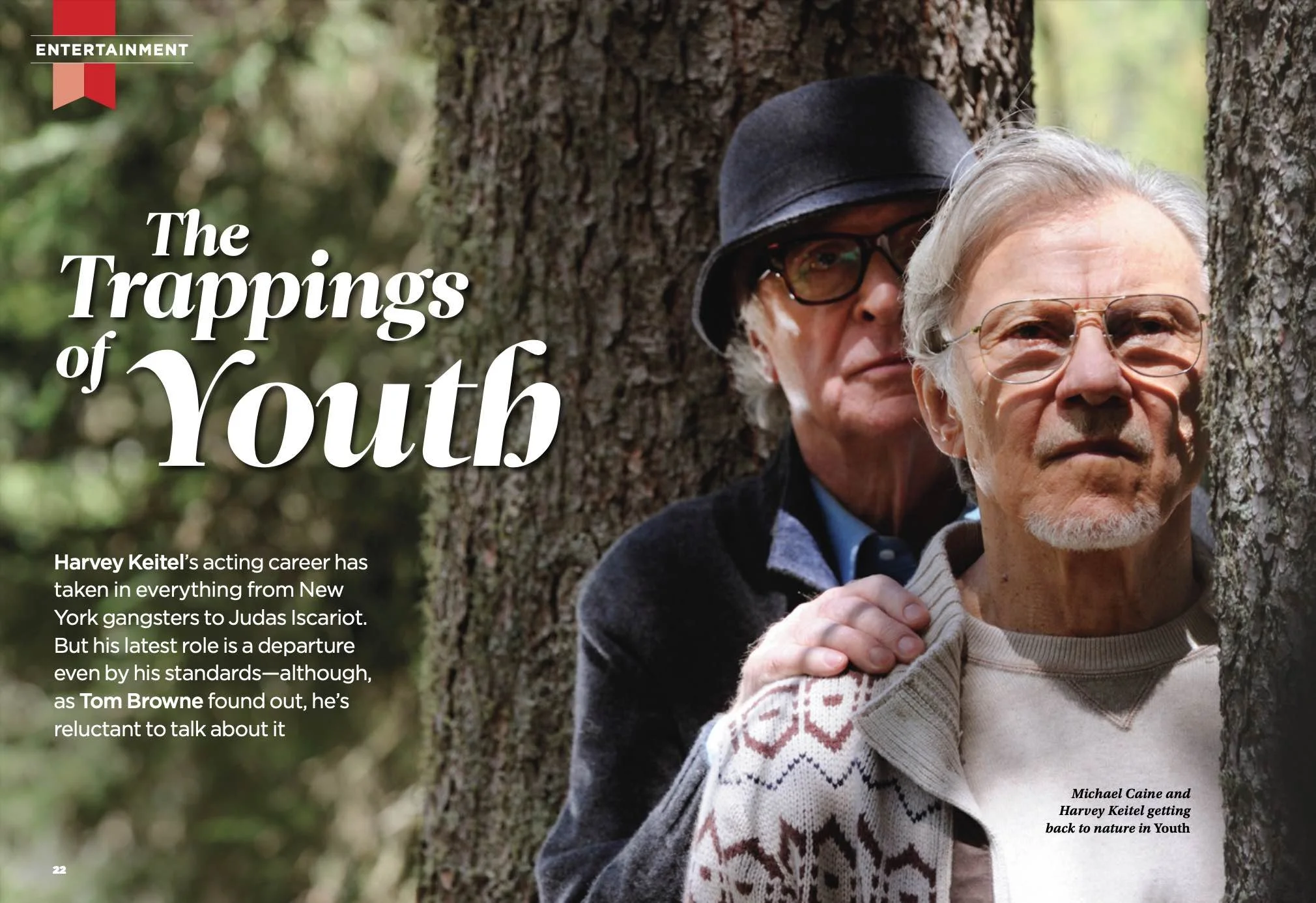Interview with Harvey Keitel
By Tom Browne
Harvey Keitel’s acting career has taken in everything from New York gangsters to Judas Iscariot. But his latest role is a departure even by his standards—although, as Tom Browne found out, he’s reluctant to talk about it
It’s all about the stare. At several points during our interview, Harvey Keitel fixes me with one—arched eyebrows, steady gaze, the hint of a frown. All those gangster roles have clearly left their mark, especially when you take in the sleek black suit and tinted glasses. I hope he doesn’t notice my trembling hands.
We’re here to talk about Youth, which represents something of a departure for the famously hard-boiled actor. Set in an isolated Swiss health resort that starts to resemble the Overlook Hotel in The Shining by the end, it focuses on two ageing best friends (Keitel, playing filmmaker Mick Boyle, and co-star Michael Caine, playing retired composer Fred Ballinger) who look back on their lives amid the picturesque Alpine setting.
The movie sounds rather drab on paper, but Italian director Paolo Sorrentino—here making his second English-language feature—has a wonderfully offbeat visual style, and the film delights in eccentric cameos, including pop star Paloma Faith, Miss Universe and a scarily convincing Maradona lookalike.
The supporting cast is also top notch, especially Rachel Weisz as Lena, Fred’s troubled daughter and assistant, and Paul Dano as Jimmy Tree, a young actor researching an upcoming role (revealed late on in an hilariously dark scene).
It’s a real witches’ brew of a film, which shouldn’t work but gets by on sheer invention. So what drew Harvey Keitel to the project?
“The story itself,” he says, after an agonisingly long pause. “That and Paolo’s former work—films such as The Great Beauty and Il Divo [both set in his native Italy]. He’s writing stories that concern me, about people and about how to live a life.”
But the story in Youth is quite simple, so was it the themes that pulled him in? There’s a lot of reflection on the past, lots of quiet agonising over mistakes made and loves lost. As an older actor (Keitel is now 76), is that the kind of subject matter he wants to explore?
“Well, that’s why we did the movie,” Keitel replies with a slight shrug, as he takes a sip of water. “That’s why I assume everyone else did it, because they saw something reflected in their own lives.” He puts his water down and locks eyes with me. “Paolo’s work is in the area you’re speaking about, so all those who enter do so at their own risk.”
I take this as my cue to talk about Sorrentino’s surreal, idiosyncratic style, which will likely alienate as many people as it charms. Was that apparent in the script?
“Well, I think I need you to answer that question,” he says, frowning slightly. “It’s all kind of surreal, so I guess you could say that if you feel that way about it. I don’t want to define it for anybody. That’s your homework.”
All right, then: was it a question of a film director imposing his style, or was there room for feedback and collaboration?
“Everyone has their vision, but no director worth their salt is going to impose something,” he replies, leaning forward and at last sounding engaged. “Making a movie, being in theatre or being on stage is not a place to impose things. You have to make things happen. I would say that you have to appeal to people. You need patience, understanding, psychology. When you approach that girl you want to take out, you don’t say, ‘Hey you, come out with me!’ ”
He smiles broadly for the first time. “Or maybe you do, I don’t know.”
Published in Reader’s Digest, January 2016.
